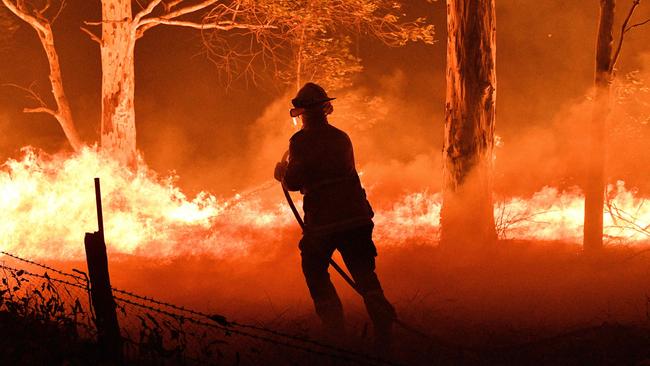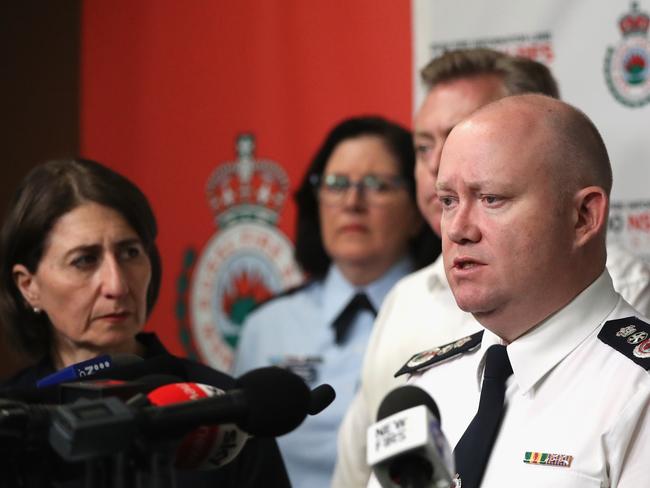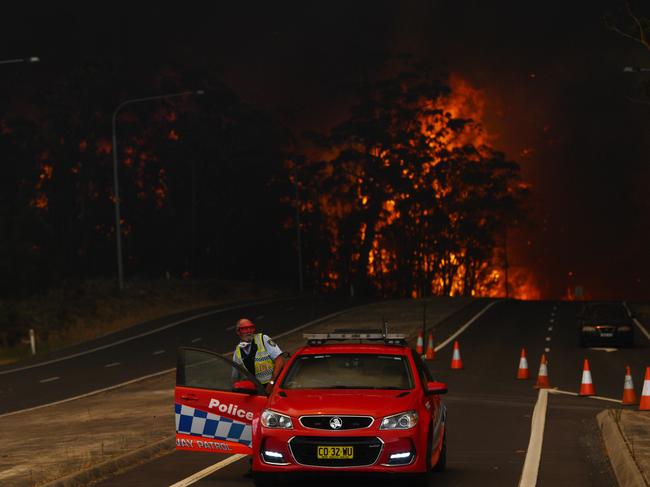Current bushfire crisis gives new meaning to ‘worst case scenario’
This horror bushfire season has far exceeded the worst expectations of firefighters, and the blazes have literally rewritten the definition of ‘worst case scenario’. Computer modelling will need to be reworked and firefighting tactics overhauled.
NSW
Don't miss out on the headlines from NSW. Followed categories will be added to My News.
These fires will rewrite the definition of “worst case scenario”.
Computer modelling will need to be reworked. History rewritten. Firefighting tactics overhauled.
Far exceeding the worst expectations of firefighters, the monstrous blazes on the NSW south coast on New Year’s Eve spread faster and wider than anyone imagined.
At least 450 properties were razed and seven people killed, including some who tried to outrun the flames in their cars.

The ferocity of the fires has forced fire authorities to reconsider what they frame as a worst-case scenario and raised questions about the reliability of fire spread mapping.
Rural Fire Service Commissioner Shane Fitzsimmons said on New Year’s Eve there was a three-tiered fire prediction — least likely, most likely and worst-case scenario.
“Generally speaking, over the last five years or so, the most likely generally correlates with what actually happens on the ground,” he said yesterday.
“On New Year’s Eve, a lot of the fires were working to the worst-case scenario.”
Mr Fitzsimmons said the fire predictions were done manually and through computer programs by the best in the business.
Ahead of yesterday’s equally dangerous fire conditions, the RFS defaulted to its “worst- case scenario based on our experience from New Year’s Eve”, he added.

The RFS knew New Year’s Eve was going to be a challenge, with fire danger ratings ranging between severe and extreme.
By 3.30am, triple-0 calls were streaming in from residents on the far south coast who were stuck in their homes surrounded by flames.
Former NSW Fire and Rescue commissioner Greg Mullins, who is a member of the Terry Hills RFS, was deployed to the Batemans Bay area alongside “scores of tankers” from Sydney on Tuesday morning.
“I was there trying to save homes at Surf Beach and Catalina and outskirts of Batemans Bay,” he said.
“I have been fighting fires for 47 years and I have seen a lot of homes burnt down but the ferocity of the fire, there was nothing you could do.”
Once the fires were running towards the coast, they went “pyroconvective”, Mr Mullins said, and created their own weather system with storm clouds and erratic winds.
“Some of our trucks had to pull out of Nelligen because frankly we would’ve lost fire fighters if they had stayed,” he said. “It was save lives first and property second.”

Mr Mullins has not shied away from his criticism of the federal government and its approach to climate change and natural disasters.
But he doesn’t believe the state government or the RFS could have done anything more on New Year’s Eve.
For Bega Valley Shire Mayor Kristy McBain, New Year’s Eve looked like it would only bring the same smoke haze that had hovered over her community for weeks.
But by mid-morning, the Bega Valley was surrounded by four separate fires and three towns had been hit.
“It happened quite quickly and took off,” she said.
“I have been briefed by emergency operations centre since the fires commenced.
“Initial mapping suggested there would be impact in a separate area but it happened much faster than what was predicted.”
As RFS Deputy Commissioner Rob Rogers confirmed the death toll, he conceded the wind had been stronger than they had predicted.
Mr Rogers said, ahead of yesterday’s dangerous fire day, the army had “pre-positioned” water in at-risk towns in case their evacuation centres were cut off.

